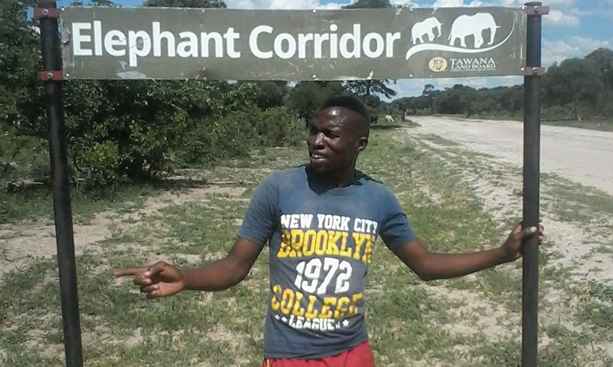Two Seronga residents GOPOLANG MAROPAMABI and MICHAEL SEDUMEDI share the experiences of their regular clashes with elephants
For many years including after independence, life in Seronga village was simple and relied on the Okavango wetlands to support human lives and economic activities. A typical household had two or three settlements one being the main home within the village, a second being a cattle post, and a third being at a farm where various crops were cultivated. The third settlement was normally used between the months of January and May allowing farm produce to be protected and harvested before the winter season. On a typical day, early in the morning boys would be at the cattle post milking cows and then drive the cattle out to the pastures between 0800 and 0900 hrs. Later in the afternoon, the boys would get into the wilderness or across the swamps to look for cattle to drive them back to the kraal to protect them from predation during the night. Between these two activities, boys would go to the river for fishing and recreational swimming. This lifestyle enabled most households to have milk, fish, and farm crops needed for daily nourishment.
The wetlands of the Okavango Delta provided abundant water and fish resources for the communities and kept many out of abject poverty. Due to abundant water resources in the delta some farmers had farms within the delta where they cultivated various crops like maize, groundnuts and melons. Even during seasons of low rainfall farmers could get a good harvest from their farms located within the wetlands. Old people have shared beautiful memories of how they lived in the 1950s and through the 1960s. Villagers farmed and produced abundant foods like maize, sorghum, peanuts and groundnuts. After a successful harvest, men were deployed to go for hunting during the flooding season which coincided with the annual harvest. Families would then gather and celebrate their successful harvest and hunting seasons enjoying game meat and farm produce. Later during the year when the flooding subsided, the fishing season would begin and allow households to have abundant access to fish as a source of protein and reduced the need to continuously depend on meat from domestic animals and wildlife.
Unlike before, it is now dangerous to go down to the river to swim or draw water as we used to because the rivers are infested with crocodiles than ever seen before. The common lagoons where we swam for recreation or fished as boys are filled up with aquatic weeds. Moreover, the safe lagoons known for drawing drinking water and watering animals are now infested with crocodiles capable of killing livestock and humans. The pastures where cattle grazed are also grazed on by elephants. Until recently, elephants were uncommon elsewhere outside the three main corridors of Mawana, Xhoro, and Kachirachira. Unlike before, elephants have extended their known corridors into human settlements and into farms and at times destroying farm fences and crops with reckless abandon. It is not uncommon to see elephants roaming very close to human settlements away from their known corridors even during the day. The free movement of elephants has resulted in occasional loss of lives of residents often occurring during the day as residents travel between the village and their cattle posts. Sometimes a villager is killed traveling from the cattle post to the clinic or school children travelling from an adjacent settlement to a nearby school. In one incident, there was a construction of water pipes from one village to another and an elephant calf got trapped in the trench. The next day when workers resumed work at the site, an elephant, probably the mother to the trapped calf attacked the workers and killed one of them. This situation is in contrast to old oral traditions which signified that elephants were not as common as they are now.
Following the massacre of cattle in the region in 1996, the Okavango region has experienced growth of the tourism sector and the increased number of wildlife encroaching freely into human settlements. Although tourism was expected to benefit residents through community based natural resources organisations, it has not benefited households to the extent possible for them to opt out of their farming enterprises which do not seem to be compatible with the tourism enterprise and related policies. The wish of residents is to see elephants driven away from people’s homes, pastures and farms as was before. The residents wish to farm and raise cattle without worrying about lions and elephants coming to take away their livelihood from them. The residents wish to live without fear of being killed by wild animals which currently roam freely about their homes, pastures and farms. These wishes are in line with the recommendations of the cabinet sub-committee on the hunting ban. We don’t wish for elephants to be wiped out of existence. We want them to be controlled so that their population is proportional to the carrying capacity of the land. We don’t want them to roam freely close and within human settlements to the extent that they threaten human lives and sustainable food production through farming.
